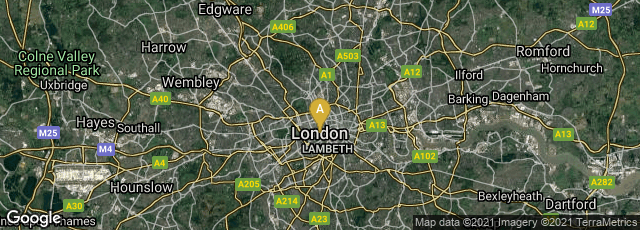Even though in the 1880s The Times was using Kastenbein typesetting machines they were also using tradititional hand typesetting, according to these images reproduced in their Printing in the Twentieth Century (1930).
This ad was published in the back of the Caxton Celebration catalogue distributed at the exhibition in 1877. The machines were demonstrated at the exhibition.
In this ad in the 1877 Caxton Celebration catalogue the manufacturers provide productivity information about the composing and distributing machines and claim that operation of them can be taught in two days.


A: London, England, United Kingdom
In 1869 Charles Kastenbein received British Patent Number 2031 for his Improvements in Apparatus or Machinery for Composing and Distributing Type. At the time Kastenbein was living in Paris so his patent was filed under the name of his agent, Charles Denton Abel. The images associated with the specification were unusually clear; they are reproduced with this database entry. By 1872 Kastenbeing moved to London. Once an English resident, he received a much more detailed patent No. 2864 with the same title as his patent of 1869. The second patent included 6 very large fold-out diagrams showing every aspect of his machines.
Kastenbein's typesetting and distributing machines stand out among the typesetting and distributing machines of the period before Linotype and Monotype because we know that they were extensively used for at least a decade or two. About 1870 Kastenbein's machines were installed at The Times newspaper in London. The manufacturers of the machines demonstrated them at the Caxton Celebration of 1877 and advertised them in the exhibition catalogue sold at the exhibition. According to the advertisements, operators using these machines could compose at the rate of 6,000-8,000 per hour and distribute at 4,000-5,000 characters per hour. Apparently the machines were quite efficient, and were used at The Times up to at least 1916 since Legros & Grant, Typographical Printing Surfaces (1916) pp. 1103-07 state:
"The Kastenbein Composing Machine invented prior to 1870 was brought into practical working form at the Times Printing Office, and with some modifications there introduced, is used for composing almost the whole of The Times and many other publications printed in the Times Office...."
According to The Times' Printing in the Twentieth Century: A Survey (1930) p. 17 Kastenbein perfected his machine in 1879, increasing typesetting speed considerably:
"This [Kastenbein's] machine could set up 298 lines of The Times, amounting to nearly 17,000 separate types, in an hour. The principle of it was that of a magazine of separate types, from which, on the pressure of a finger-key, each type as required was released and put in its right place in the line being composed. Types thus set up had to be distributed, that is, returned each to its proper place in the case on the composing machine after the printing was done. Several efforts were made to devise a machine that would would do this satisfactorily by means of nicks in the type; but in the end it was found that the quickest and surest method of distribution was through the melting pot. It took less time and cost less money to melt used type down at once and cast it all fresh for each printing than to distribute it that it could be used again...."
According to the 1930 book, The Times eventually replaced the Kastenbein machines with a variety of different hot metal devices, including Linotype and Monotype.